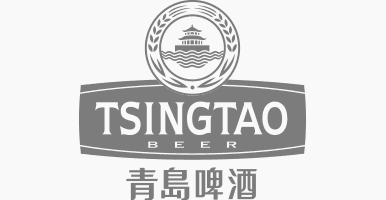China is largely considered to be one of the most advanced and tech-savvy countries in the world. Today smartphones, internet connected cars and flying camera drones are just some of the things you’ll find in the hands of the young affluent residents of Beijing and Shanghai. This is contemporary China.
China however is also an old country steeped in thousands of years of history. Back in the ages, priority when it came to design was based primarily on functionality; performance took precedence over image. Such items performed so well that they are still considered to be perfect examples of industrial design today. They also contributed to create Chinese-style aesthetics that became popular in the Western world. The list is long but we have selected 5 ordinary items in common use in China, which are still symbolic of Chinese culture today.
- THE THERMOS
 Every Chinese family has a thermos or two as they remain very much relevant to people’s lifestyles and tastes today. They are still the most practical, popular and affordable way to keep liquid hot for up to 8 hours. Not so long ago, it was an honour to be granted a thermos printed with colourful patterns and the character jiang (award). The thermos was only awarded if one became a model worker, helped someone in need, or won a prize in a singing contest. Today the aesthetics of the thermos play a large part in their outward design and their popularity is worldwide.
Every Chinese family has a thermos or two as they remain very much relevant to people’s lifestyles and tastes today. They are still the most practical, popular and affordable way to keep liquid hot for up to 8 hours. Not so long ago, it was an honour to be granted a thermos printed with colourful patterns and the character jiang (award). The thermos was only awarded if one became a model worker, helped someone in need, or won a prize in a singing contest. Today the aesthetics of the thermos play a large part in their outward design and their popularity is worldwide.
2. THE TRICYCLE
 Truth is that buses can’t reach every corner of the major cities and taking taxis for a few kilometres is rather costly. So between the two, these three wheeled forms of transportation have found their market as still being the most convenient way to move around the narrow streets of the major cities. People also rent tri-cycles for small items to be transported as it’s easy to fit lots of boxes in the back compartment
Truth is that buses can’t reach every corner of the major cities and taking taxis for a few kilometres is rather costly. So between the two, these three wheeled forms of transportation have found their market as still being the most convenient way to move around the narrow streets of the major cities. People also rent tri-cycles for small items to be transported as it’s easy to fit lots of boxes in the back compartment
3. THE BIG BAG
 Made of strong woven plastic the big bag or ‘Chinese laundry bag’ has been widely used in china for centuries. The plastic is often referred to as ‘snakeskin’ because of its colouring and rough texture; this hardy material however is essential as the big bag is used to pretty much carry anything and everything. Migrant workers often fit everything they own in one of them, travellers to carry their luggage, and shoppers to fill with their groceries. When you are accustomed to using something so practical and reliable, it’s easy to see why the big bag used from centuries past, is still a staple item in modern day China.
Made of strong woven plastic the big bag or ‘Chinese laundry bag’ has been widely used in china for centuries. The plastic is often referred to as ‘snakeskin’ because of its colouring and rough texture; this hardy material however is essential as the big bag is used to pretty much carry anything and everything. Migrant workers often fit everything they own in one of them, travellers to carry their luggage, and shoppers to fill with their groceries. When you are accustomed to using something so practical and reliable, it’s easy to see why the big bag used from centuries past, is still a staple item in modern day China.
4. RED LANTERNS
 Originating in China approximately 1800 years ago, the red lantern has become one of the most recognised symbols of China. Initially created out of a requirement for practicality (to protect the naked flame from being extinguished so it’s light would have longevity), lanterns today may have lost their practical need, they are however still widely used and enjoyed for functionality, decoration and artistic expression. Some historians believe that the street lighting in Europe derived from Imperial China where street lighting already existed in the form of lanterns hanging in house entrances and gate ways.
Originating in China approximately 1800 years ago, the red lantern has become one of the most recognised symbols of China. Initially created out of a requirement for practicality (to protect the naked flame from being extinguished so it’s light would have longevity), lanterns today may have lost their practical need, they are however still widely used and enjoyed for functionality, decoration and artistic expression. Some historians believe that the street lighting in Europe derived from Imperial China where street lighting already existed in the form of lanterns hanging in house entrances and gate ways.
The hanging of red lanterns is part of China’s traditional culture which is still widely used today. The red lantern represent harmony, happiness, vitality and wealth which is why the Chinese love to hang them at celebrations and parties such as the Chinese New Year and lantern festivals.
5. THE SEAL
Seals have been part of Chinese culture for centuries, in fact the art of seal engraving can be traced back to more than 3000 years. One of the most famous Chinese seals is the ancient Heirloom Seal which was created around the year 200 for The Emperor of China. He had a seal maker carve it from a famous piece of jade stone which the royal family continued to use for centuries. Emperors used it to give orders and officials on government documents.
To the Chinese, a seal was for many centuries a symbol of power. Emperors used it to give orders and officials used it on all government documents, and expert seal carvers only created seals to be used by the rich to mark one’s identity, credentials and importance.
 Seals are still seen as a symbol of authority and are still used on government and business documents as well as art work. They are also widely used on a practical level – because they are hard to forge and should only be accessible to the owner, they can be used as identification when signing for a parcel or signing a cheque at the bank. For a tradition spanning 3000 years, it’s a testament to Chinese culture that the seal (and the art of seal engraving) is becoming more popular than ever.
Seals are still seen as a symbol of authority and are still used on government and business documents as well as art work. They are also widely used on a practical level – because they are hard to forge and should only be accessible to the owner, they can be used as identification when signing for a parcel or signing a cheque at the bank. For a tradition spanning 3000 years, it’s a testament to Chinese culture that the seal (and the art of seal engraving) is becoming more popular than ever.


